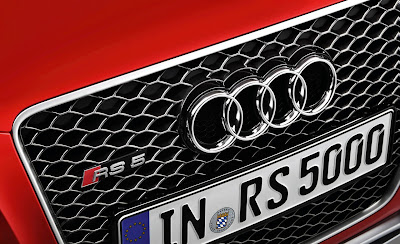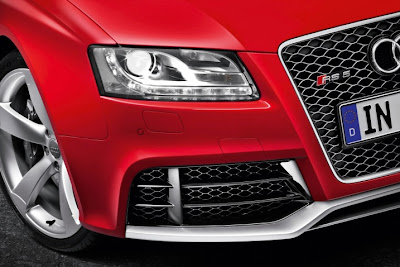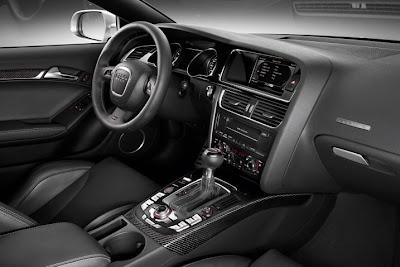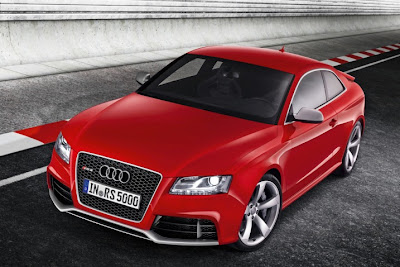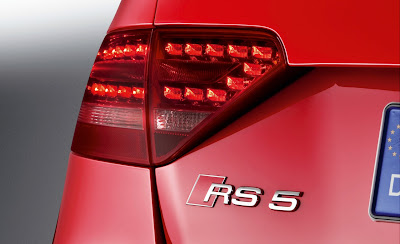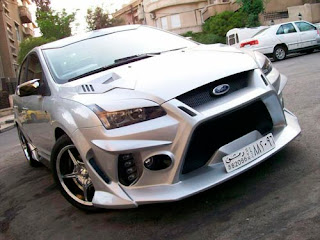The Chevrolet Camaro was introduced in North America by the Chevrolet Motor Division of General Motors at the start of the 1967 model year as competition for the Ford Mustang. Although it was technically a compact car (by the standards of the time), the Camaro, like the entire class of Mustang competitors, was soon known as a pony car. It may also be classified as an intermediate touring car, a sports car, or a muscle car. The car shared the same General Motors "F-Body" platform and major components with the Pontiac Firebird, also introduced in 1967. Production of both cars ceased in 2002.
Though the car’s name was contrived with no meaning, GM researchers reportedly found the word in a French dictionary as a slang term for "friend" or "companion." Ford Motor Company researchers discovered other definitions, including "a shrimp-like creature" and an arcane term for "loose bowels." In some automotive periodicals before official release, it was code-named "Panther." Historical examples exist of Chevrolet product managers being asked by the automotive press "what is a Camaro?", with the tongue-in-cheek answer being "a small, vicious animal that eats Mustangs," a sideways reference to the competing Ford Mustang.
While the Camaro was never the flagship for Chevrolet, it was for many years one of its most popular models. If its frequent inclusion in automotive enthusiast magazines is any indication, the Chevy Camaro is one of the most popular cars for modification in automotive history.
Four distinct generations of the car were produced.
1967
Sharing mechanicals with the upcoming 1968 Chevrolet Nova, the Camaro featured unibody structure, combined with a sub-frame supporting the front end. Chevrolet offered the car in only two body styles, a coupe and convertible. Almost 80 factory and 40 dealer options including three main packages were available.
The Camaro’s base powertrain was a 3.8 L (230 in³) I6 engine rated at 140 hp (104 kW) and backed by a Saginaw three-speed manual transmission. A Muncie four-speed manual was also available. The two-speed "Powerglide" automatic transmission was a popular option in 1967-68 until the three-speed "Turbo Hydra-Matic 350" replaced it starting in 1969. The TH350 was also an option on SS396 cars from late 1967 onwards.
The 290 hp (216 kW), 5.7 L (350 in³) V8 first saw duty in the 1967 Camaro and virtually every engine in the Chevrolet lineup was offered as an option.
1968
1968 saw the deletion of the side vent windows and the introduction of Astro Ventilation, a fresh-air-inlet system. Also added were side marker lights, a more pointed front grill, and divided rear taillights. SS models received optional chrome hood inserts. On some models, multi-leaf rear springs replaced single-leaf units, and shock absorbers were staggered. 6.5 L (396 in³) 350 hp (261 kW) engine was added as an option for the SS, and Z28 became known by buyers and 7199 units were sold.
The 1969 Camaro carried over the previous year’s drivetrain and major mechanical components, but all new sheet metal, except the hood and trunk lid, gave a car a substantially sportier look. The grille was redesigned with a heavy "V" cant and deeply inset headlights. New door skins, rear quarter panels, and rear valence panel also gave the car a much lower, wider, more aggressive look. This styling would serve for the 1969 model year only. Collectors often debate the merits of smooth, rounded lines of 1967 and 1968 model versus the heavily creased and sportier looks of the
1969.
The real treat for the 1969 model year, however, was the vast array of new performance options. A GM corporate edict forbid Chevrolet from installing engines larger than 400 in³ (6.6 L) in the Camaro. Chevy also knew that there was a market for ultra-powerful Camaros armed with the Corvette’s L-72 427 in³ (7.0 L) engine, as evidenced by the success of dealerships like Yenko Chevrolet, Nickey Chevrolet, and Dana Chevrolet, who installed their own. So, Chevrolet quietly offered two Central Office Production Orders (COPO) options, numbers 9560 and 9561, for the 1969 model year. The COPO 9561 option brought the fire-breathing L-72 big-block engine, making an underrated 425 hp (317 kW) gross. Don Yenko ordered several hundred of these cars, along with a variety of other high performance options, to create the now-legendary Yenko Camaro. Overall, Chevrolet produced just 1,015 L-72 equipped Camaros.
Even rarer was COPO 9560. This option installed an all-aluminum 427 in³ (7.0 L) big-block called the ZL-1. Just 69 ZL-1 Camaros were produced, probably because the engine alone cost over 4,000 USD—nearly twice that of a base V-8 coupe. Though rated at 430 hp (321 kW) gross, the ZL-1 made closer to 550 hp (410 kW), making it both the fastest and rarest of all Camaros.
The 1969 model year was exceptionally long, extending into December of 1969, due to production problems with the completely redesigned second generation model. Many of the late production cars were titled as 1970 models, and there are GM press photos showing cars sporting "1970" licence plates; this is also the source of the "1970 1/2" moniker sometimes applied to the second generation 1970 model year cars. Equipped with the lighter weight "split bumper" in the front (i.e., no bumper across the central grill opening) and with all the refinements and enhancements up to that point, these "1970 1/2" model year vehicles are generally regarded as the most desirable of the early Camaros, since the performance of those immediately following was to be hampered by the addition of heavy Federally mandated bumpers as well as the power-reducing automobile emissions control systems of the period.
----
The larger second-generation Camaro featured an all-new sleek body and improved suspension. The 1970–1/2 Camaro debuted as a 2+2 coupe; no convertible was offered and would not appear again until well into the third generation. Most of the engine and drivetrain components were carried over from 1969 with the exception of the 230 in³ (3.8 L) six cylinder — the base engine was now the 250 in³ (4.1 L) six rated at 155 hp (116 kW). The top performing motor was a L-78 396 in³ (6.5 L) V8 rated at 375 hp (280 kW). Starting in 1970, the 396 in³ (6.5 L) nominal big block V8’s actually displaced 402 in³ (6.6 L), yet Chevrolet chose to retain the 396 badging. Two 454 in³ (7.4 L) engines—the LS-6 and LS-7—were listed on early specification sheets but never made it into production. Besides the base model, buyers could select the "Rally Sport" option with a distinctive front nose and bumper, a "Super Sport" package, and the "Z-28 Special Performance Package" featuring a new high-performance 360 hp (268 kW) 350 in³ (5.7 L) V8.
1972
The 1972 Camaro suffered two major setbacks. A UAW strike at a GM assembly plant in Ohio disrupted production for 174 days, and 1100 Camaros had to be scrapped because they did not meet 1973 Federal bumper safety standards. Some at GM seriously considered dropping the Camaro and Firebird altogether, while others were convinced the models remained marketable. The latter group eventually convinced those in favor of dropping the F Cars to reconsider, and Chevrolet would go on to produce 68,656 Camaros in 1972. 970 SS396 were produced in 1972, and this was the last year for the SS model.
1973
A new LT option was offered in 1973, and new impact-absorbing bumpers were standard. The Super Sport package was dropped, and the big block 396 in³ (6.5 L) V8 could no longer be ordered. Power was down due to new emissions standards, with the top rated 350 in³ (5.7 L) V8 producing 245 hp (183 kW).
1974
The 1974 Camaro grew seven inches longer thanks to new aluminum bumpers and forward sloping grille. Round taillights were replaced with a rectangular wraparound design.
1975
The Z-28 option was dropped for the 1975 and 1976 models, and power continued to decline drastically. Two 350 in³ (5.7 L) V8s produced 145 hp (108 kW) and 155 hp (116 kW) (power ratings were now net as opposed to the prior gross ratings. Net power ratings were taken from the engine crankshaft as before, but now all accessories had to be attached and operating, and all emissions equipment and a full production exhaust system had to be in place. These power-robbing additions — along with stringent new emissions laws — were instrumental in creating the vastly smaller power figures found in subsequent cars). A new wraparound rear window was introduced for 1975.
1977
The Z28 was re-introduced to the buying public in the spring of 1977 as a 1977-1/2. This car was an instant hit, with most cars sold equipped with air-conditioning and an automatic transmission for a comfort-oriented public. The cars were also available with a Borg-Warner Super T-10 4-speed manual and minimal option packaging for those buyers interested in a performance-oriented vehicle. The half-year model was one of the few American performance vehicles available at the time. The car was capable of turning in quarter-mile times comparable to many of the nineteen sixties’ performance cars, and the chassis was developed to reward the driver with a first-class grand touring experience, capable of outstanding handling, especially in the hands of a competent high-performance driver. More than one Z28 was sold as a stripped radio-delete bare-bones performance car, and in this trim the Z28 could out-perform Pontiac Trans-Ams and aging C3 Corvettes on highways and canyon roads.
1978
The 1978 model featured new soft front and rear bumpers and much larger taillamps. To go along with this new bumper they also gave the feature of body kit to lower the front nose. some even featured sideskirts as well. This was also the first year the T-top — a t-bar roof with dark tinted glass lift-out panels — became available as an option.
1980
For 1980 the aged 250 in³ (4.1 L) inline six was replaced with a 229 in³ (3.8 L) V6, 231 in³ (3.8 L) in California. The Z-28 hood included a rear-pointing raised scoop with a solenoid operated flap which opened at full throttle, allowing the engine to breathe cooler air.
1981
The 1981 model was virtually unchanged from 1980 and would be the last model year for the second generation Camaro. Total production had dropped down to 126,139 from a high of 282,571 in 1979.
----
1982
The 1982 model introduced the first Camaros with factory fuel injection, four-speed automatic transmissions (three-speed on the earlier models), five-speed manual transmissions (four-speed manual transmissions in 1982, and some 1983 to 1984 models), 15- or 16-inch (381- or 406-mm) rims, hatchback body style, and even a four-cylinder engine (due to concerns over fuel economy in the wake of the 1979 energy crisis). The Camaro Z28 was Motor Trend magazine’s Car of the Year for 1982.
The Chevrolet Camaro Z28 paced the Indianapolis 500 in 1982 and over 6000 replicas were sold through Chevy dealers. The pace car edition featured special two-tone silver/blue paint and special striping, orange pin-striping on 15-inch Z28 wheels, and a silver/blue interior with 6-way Lear-Seigler manual adjustable seating. Engine choices in the pace cars were the same as the regular Z28 (Cross-Fire fuel injection or 4-barrel carb).
1985
In 1985 Chevrolet introduced a new Camaro model—the famous IROC-Z, named after the popular competition International Race of Champions. IROC-Z Camaro featured upgraded suspension, special decal package and Tuned Port Injection system taken from the Corvette. Third generation Camaros also had a suspension system that was more capable in corners than the previous generation. The Camaro IROC-Z was on Car and Driver magazine’s Ten Best list for 1985. The 305 was the only engine to receive the Tuned Port Injection considering the L98 350 was not available until 1987.
----
1993
1993 began the fourth and last generation of Camaros, lasting through the 2002 model year. Production of the fourth and final generation was moved from GM’s Van Nuys, California assembly plant to one in Sainte-Thérèse, Quebec in 1993. Though the car would no longer be produced in the US, the new design which incorporated lightweight plastic body panels over a steel space frame, and a better suspension, further improved upon the Camaro line. The 1993 Camaro also featured the LT1 V8 engine that had been introduced in the Corvette one year earlier, as well as an optional six-speed manual transmission when ordered with the V8. In celebration of this, the 1993 Camaro Z28 was selected as the official pace car for the 1993 Indianapolis 500; a pace car edition was produced in limited quantities, with a unique black and white color scheme. V8 models remained largely unchanged through 1995.
1993 V6 models were powered by the 160hp 3.4L V6. A 5-speed manual or 4-speed automatic transmission was available.
1994
Same as the 1993 Camaro but with minor changes (the 4L60 automatic was replaced with an electronic version—the 4L60E).
1995
In 1995, V6 Camaros sold to meet California emissions standards were produced with the 3800 Series II engine, while V6 Camaros sold elsewhere retained the old 3.4L engine.
For the V8 Camaros, the often-problematic OptiSpark distributor was updated to include a vent to remove moisture from the unit, greatly extending its longevity.
The use of the OBD-1 computer system was still used; however, the connection to the PCM was via the newer style OBD-2 plug.
1996
1996 saw a minor mechanical revision of the Camaro, as well as some power gains from the new OBD II-compliant engine controls and improved exhaust. Two option packages also returned: the "RS" package, which was an appearance option for V6 cars, and the "SS" package, a performance and appearance package for V8 cars.
1997
For the 1997 model year, the Camaro was offered with a "30th Anniversary Package", which included unique orange stripes on white base paint. Also, 100 30th Anniversary Camaro SS cars were sent to SLP to have the 330hp LT4 engine installed. While this made it the fastest Camaro available at the time, it was also by far the most expensive with a price of over $38,000.
The exterior of the car remained largely unchanged other than the addition of amber to the rear tail lights, however the interior received a major facelift.
1998

In 1998, the Camaro received its most major update since 1993. The most obvious is the revised front bodywork, with the headlights now being rounded and flush with the bodywork, instead of square and inset. The grille and bumper were revised to match. The interior also received some updates, but the change that was most important to enthusiasts was under the hood. Replacing the LT1 was GM’s all-new LS1, which had been introduced with the fifth-generation Corvette in 1997. It featured the same OHV design, but was cast in aluminum, reducing weight. While the engine had been "detuned" slightly with only single exhaust (which would split into two when it exited the underside of the car) the small number of changes between it and the Corvette version — as well as the real-world performance — make the 305hp rating that GM assigned it in the Z28 a rather conservative estimate. Dyno reports and performance figures support the notion that all LS1 cars, regardless of Chevrolet’s figures put out 345 hp. The suspension was updated and softened to appeal to a wider market and the brakes were increased in size. The SS and RS option packages continued, with a revised body kit for the RS — the most notable change being removing the center section of the front lip, a piece that is cracked on a very large number of 1996-1997 RS cars. While the new design did spark sales, the total production for 1998 was just 48,490 — a far cry from the 110,000 units sold in 1994 or the 200,000+ units per year sold in the 1970s.
2001
2001 was the lowest production year ever for the Camaro, partly due to slow sales and partly due to ceasing production earlier than usual to begin early work on the 35th Anniversary 2002 cars. Just 29,009 Camaros were built for this year.
The 2001 Z28 and SS models received the intake manifold from the LS6 (the engine used in the fifth-generation Corvette Z06.) Accordingly, the horsepower rating was increased to 310 for the Z28 and 325 for the SS, although both models remained underrated.
2002
The Camaro remained almost completely unchanged from 1999 to 2002; sales declined as the enthusiast market continued to switch to smaller four- and six-cylinder cars. GM announced that this would be the final year of production for the Camaro, as the sales were not high enough to justify redesigning the platform again and the car could not be priced high enough to make low volumes profitable (unlike the Corvette).
A 35th Anniversary Edition was offered on all trim levels (base, Z28, and SS.) Options included with the anniversary package included a dash plaque above the radio, optional nose-to-tail stripes, and embroidered seats on the SS. The 35th Anniversary Camaro was only available as a convertible or with T-tops. 3,000 Camaros with the anniversary package were produced for the United States and 152 for Canada.
The final Camaro was built on August 27, 2002; total production for 2002 was 42,098. The Sainte-Thérèse plant, the only GM plant in Canada outside of Ontario, then closed down.

